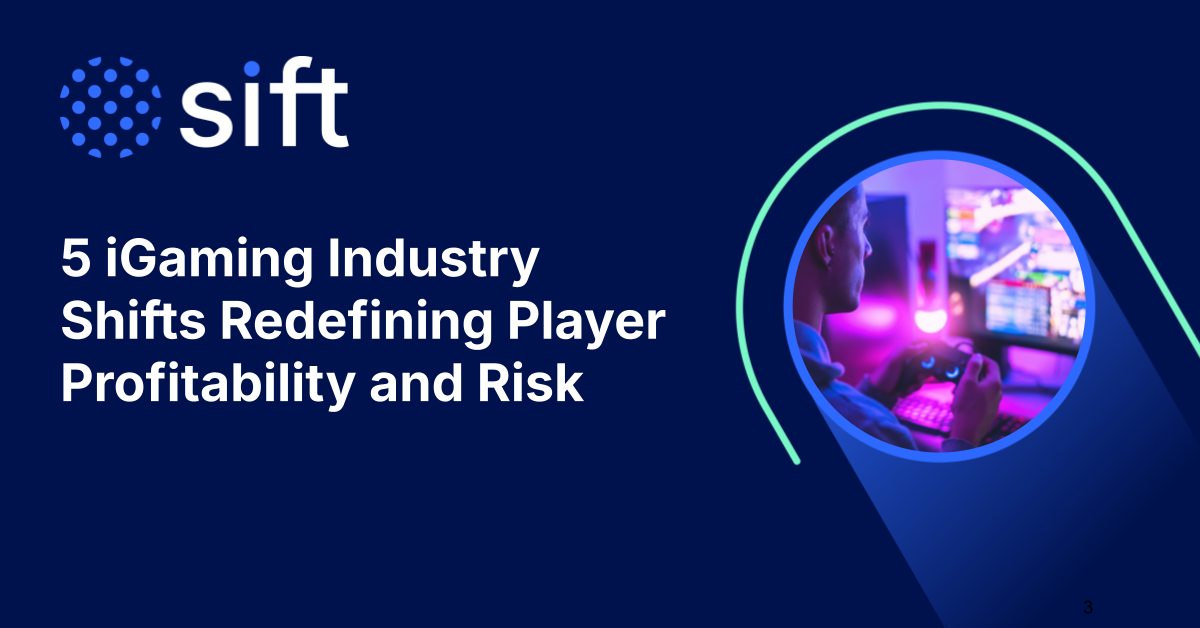The Sift team recently exhibited and presented at Merchant Risk Council (MRC) Vegas, one of the most influential events in the payments and fraud prevention industry. At the conference, Sift co-hosted an event with Incode and presented a Fraud 201 Workshop with Brittany Allen, Trust and Safety Architect at Sift, and Paul Brock, Fraud Manager at Apple. We also unveiled our Q1 2024 Digital Trust & Safety Index report during the event, which delves into the latest in payment fraud data, consumer insights, and emerging trends.
Read on to learn about the top fraud trends merchants should know about in 2024, culminating findings from the floor of MRC Vegas, the MRC 2024 Global Payments and Fraud Report, and insights from the Sift Global Data Network.
How Shifting Consumer Behavior is Impacting the Fraud Landscape
As consumer behavior evolves, so do fraud tactics. Per the MRC, more than six in 10 merchants cite an increase in first-party misuse over the past year, driven by increasing e-commerce sales, rising inflation, and the proliferation of fraud-as-a-service tools on the internet.
Data uncovered by Sift backs up these findings, particularly when it comes to younger generations like Gen Z being the closest to fraud both as perpetrators and victims. Sift research has found that 42% of Gen Zers admit to engaging in first-party fraud, in which they file a false fraud dispute for a transaction they made. Gen Z is also the generation most likely to personally participate in payment fraud or know someone who has, plus see offers to participate in fraud online. At the same time, Gen Z is rapidly adopting digital wallets, less likely to be brand loyal, and has high expectations when it comes to the customer experience. This creates a complex environment for merchants to navigate.
The MRC has also revealed where merchants should be shifting their focus to get a better handle on these forms of fraud. Although more than half of merchants monitor fraud at the purchase and payment stages of the consumer journey, most don’t at pre-or post-purchase stages, such as refund requests or disputes. This highlights the need for merchants to implement solutions at these points in the customer journey to be as effective as possible at combating fraud and maximizing revenue.
Using AI to Fight AI Fraud
Fraudsters are increasingly leveraging AI to refine their fraud techniques and launch more successful and sophisticated attacks. One study found that 98% of respondents identified AI-enabled fraud attacks as significantly impacting the level of fraud their businesses have encountered over the past two years. It’s also causing consumers to shop online less frequently due to the fear of AI threats. Sift found that 30% of surveyed consumers shop online less frequently due to the cybersecurity threats posed by artificial intelligence.
AI has emerged as a game-changer in the fight against both AI-driven fraud and other forms of fraud, with merchants increasingly viewing it as an essential tool they’re looking to adopt. According to the MRC, merchants are using an average of one to two AI/ML-based fraud tools or applications, with usage of these advanced solutions likely to grow this year. Moreover, 55% indicate improving AI/ML accuracy is the number one area of improvement for fraud management over the next year.
“The one word we heard come up repeatedly at this year’s MRC was AI. It’s a tool that fraudsters have adopted quickly, and businesses that haven’t at least started to explore leveraging this technology are putting themselves at risk of being exploited by it. Now’s the time for businesses to invest in AI internally—it’s the only technology capable of keeping up with the threat AI itself poses,” said Kevin Lee, VP of Trust and Safety at Sift.
Optimizing the Risk-Revenue Equation
According to the MRC, 45% of merchants view improving the consumer experience as the most important fraud management priority—up 25% from 2023 and now equally split with reducing fraud and chargebacks. This indicates that merchants are now just as focused on using fraud prevention as a means to grow their businesses. As merchants look at how to provide customer-friendly online experience and ensure streamlined and secure transactions, it will come down to leveraging the right tools and solutions to find the optimal balance. With these important priorities to juggle, merchants clearly need to leverage data-driven insights to safeguard their operations and satisfy their customers.
Achieving Best-in-Class Fraud Benchmarks with Sift
The MRC provides valuable baseline data on payment fraud trends, offering a broad view of the challenges faced by businesses. However, Sift’s own data from the Fraud Industry Benchmarking Resource (FIBR) offers a deeper breakdown of fraud findings by industry and region.
Comparing MRC data to our findings reveals a stark contrast in fraud rates. Sift customers consistently achieve below-industry-average fraud rates, attributed to our long-standing heritage in AI and over a decade’s worth of fraud decisioning science. Our block rates, among other fraud metrics, outperform those surveyed by the MRC, highlighting the efficacy of our solutions. For example, our latest data for Q1 2024 shows that across the Sift Global Data Network, the average blocked payment fraud rate was 2.7%—53% lower than MRC’s reported 5.8% average order rejection rate due to fraud. This means Sift is able to detect and prevent fraud more precisely without falsely rejecting trusted customers’ transactions and potentially losing their business.
And when it comes to manual review, the MRC finds that merchants apply roughly a 2-to-1 ratio, screening approximately 25% of orders manually and 50% of orders digitally. Comparing this to Sift’s current average manual review rate of 1.7% shows just how far some businesses have to go to fully automate and streamline their fraud operations.
If you’re looking to expand your fraud prevention expertise, check out our self-paced Fraud Key Performance Indicators (KPIs) course with the MRC. This intermediate-level program equips you with the tools to manage critical fraud KPIs like chargeback rates and false positives.







